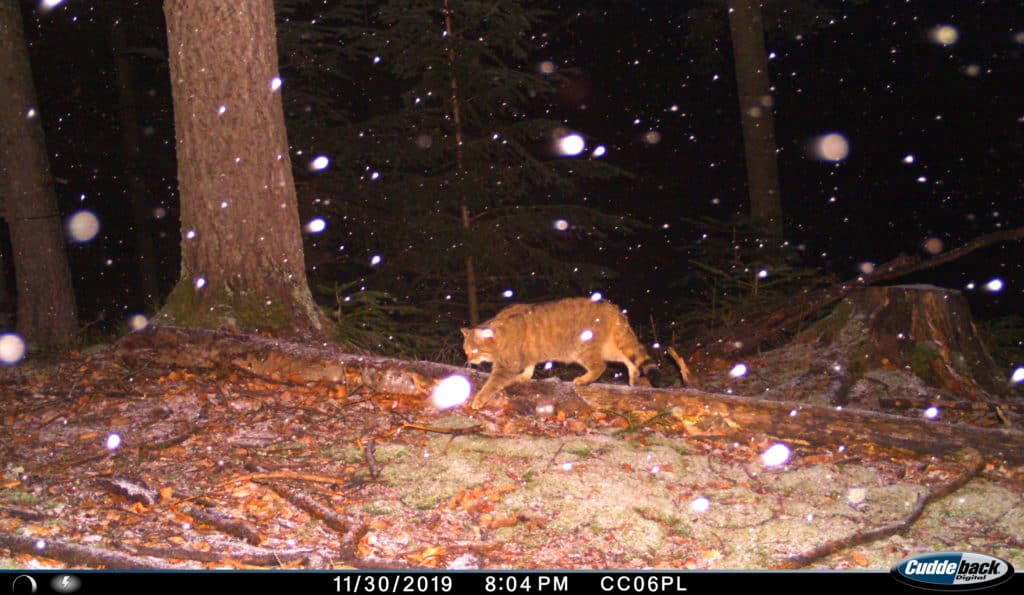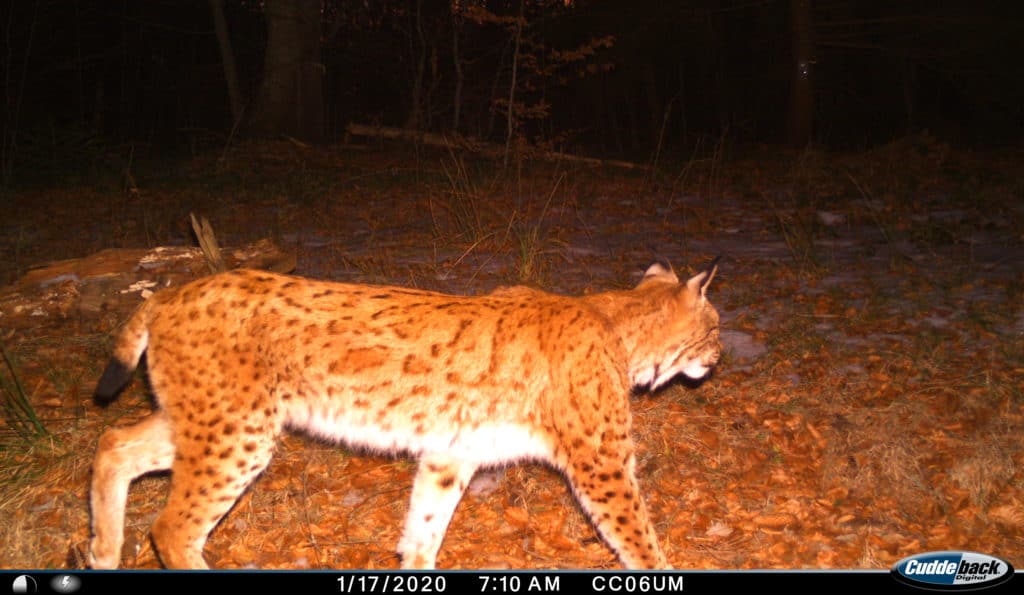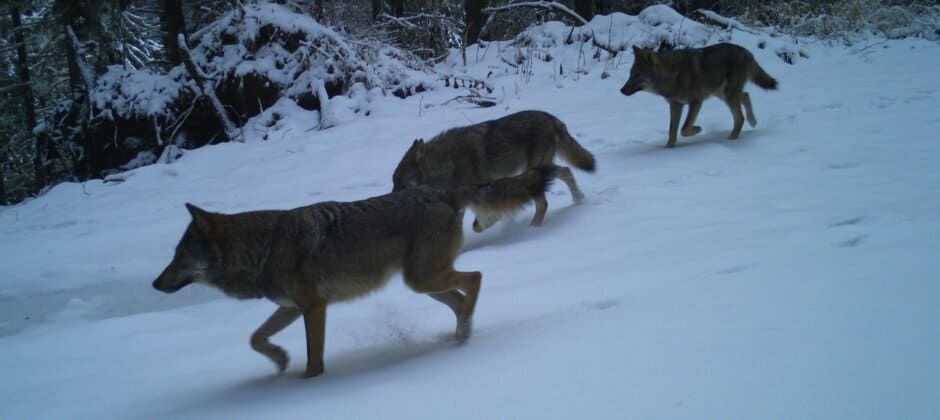Share this article
TWS2020: Transylvanian carnivores live in harmony
Thoughts of vampires may make some people want to keep their distance from Transylvanian carnivores, but new research shows that the animals seem to tolerate each other’s presence quite well.
An analysis of trail camera photo revealed that Eurasian lynx (Lynx lynx), European wildcats (Felis silvestris) and gray wolves (Canis lupus) in Romania’s southern Carpathian Mountains are often found in similar environments.
“They probably have similar habitat needs, so this makes sense,” said TWS member Marissa Dyck, a PhD student in biology at Ohio University and one of the scientists involved in ongoing research featured this week at The Wildlife Society’s virtual 2020 Annual Conference.
Some European countries are working on a number of reintroduction plans for carnivores like lynx and wolves that have been absent from the landscape for centuries. Other animals are naturally recolonizing some areas. Dyck and her colleagues wondered whether these reappearances would have any effect on the smaller mesocarnivores that still live in these areas like foxes or badgers (Meles meles). Would the appearance of larger carnivores push smaller competitors out of some prime habitats? As a point of comparison, they decided to look at how two larger carnivores — wolves and lynx — interacted with a smaller mesocarnivore in Transylvania, a relatively wild area with robust ecosystems.
“Romania has had stable populations of all these carnivores for a really long time,” Dyck said. “They haven’t been extirpated like they have in many parts of Europe.”

Wildcats were found less in higher elevations, possibly due to them avoiding deeper snow in the winter. Credit: Foundation Conservation Carpathia
Wildcats aren’t domestic strays, but a native mesocarnivore species in the area. “They kind of look like grumpy house cats, just a little bigger,” Dyck said.
The researchers analyzed trail camera shots taken by the Foundation Conservation Carpathia, a nonprofit organization whose vision is to create wilderness reserves in the southern Romanian Carpathians large enough to support significant numbers of large carnivores. They have been monitoring large carnivores and human-wildlife conflicts in the Transylvania region, watching for wolves, wildcats and lynx during the winter.
Volunteers first identified the animals in the photos. Then, the team broke out the animal sightings into grid cells and ran models that took different landscape variables into account like roads, altitude, landscape type and presence of human settlements.
They found a few trends in terms of where the animals were found. All three carnivores were more likely to be found in similar areas, though the smaller wildcats were found less often in in highly forested areas if wolves or lynx were present. Dyck said the researchers aren’t yet sure whether the larger predators are pushing the wildcats out of these areas, or whether the smaller cats just prefer other habitat than the dense forests that wolves and lynx favor.
But for the most part, they were found in the same types of areas. “Our data shows that the three predators can co-occur and can coexist,” Dyck said.

Eurasian lynx were often found in areas with more roads.
Credit: Foundation Conservation Carpathia
The team also found that roads had an effect on the two larger predators, though in contrasting ways. Lynx were more likely found in areas with more roads — Dyck said they possibly used them for traveling. But wolves were typically found more in areas with fewer roads. She’s not yet sure whether this indicates the species are avoiding roads. Roads might repel the wolves’ ungulate prey, for example, thereby drawing the canids away as well, and may draw lynx prey.
Altitude also seemed to have a negative effect on wildcats but not lynx. Dyck said that since this survey was done in the winter, that isn’t necessarily surprising as the smaller wildcats may not be able to move as easily in the deeper snow at higher elevations. For the larger lynx, deep snow didn’t seem to be a problem.
Dyck said that the study suggests that while short-term impacts may occur in other parts of Europe when larger carnivores move back in through reintroduction or recolonization, a balance may be reached overtime.
“It provides some promising results that, at least in the long term, these animals are coexisting, and can inform management in other jurisdictions where carnivores are making a comeback,” she said.
Conference attendees can visit office hours for this contributed paper on Wednesday, Sept. 30 from 2 p.m. to 3 p.m. to learn more and ask questions. A video recording of the presentation will be available starting Monday, Sept. 28.
Header Image: Gray wolves move through the woods in the Carpathian Mountains. Credit: Foundation Conservation Carpathia








